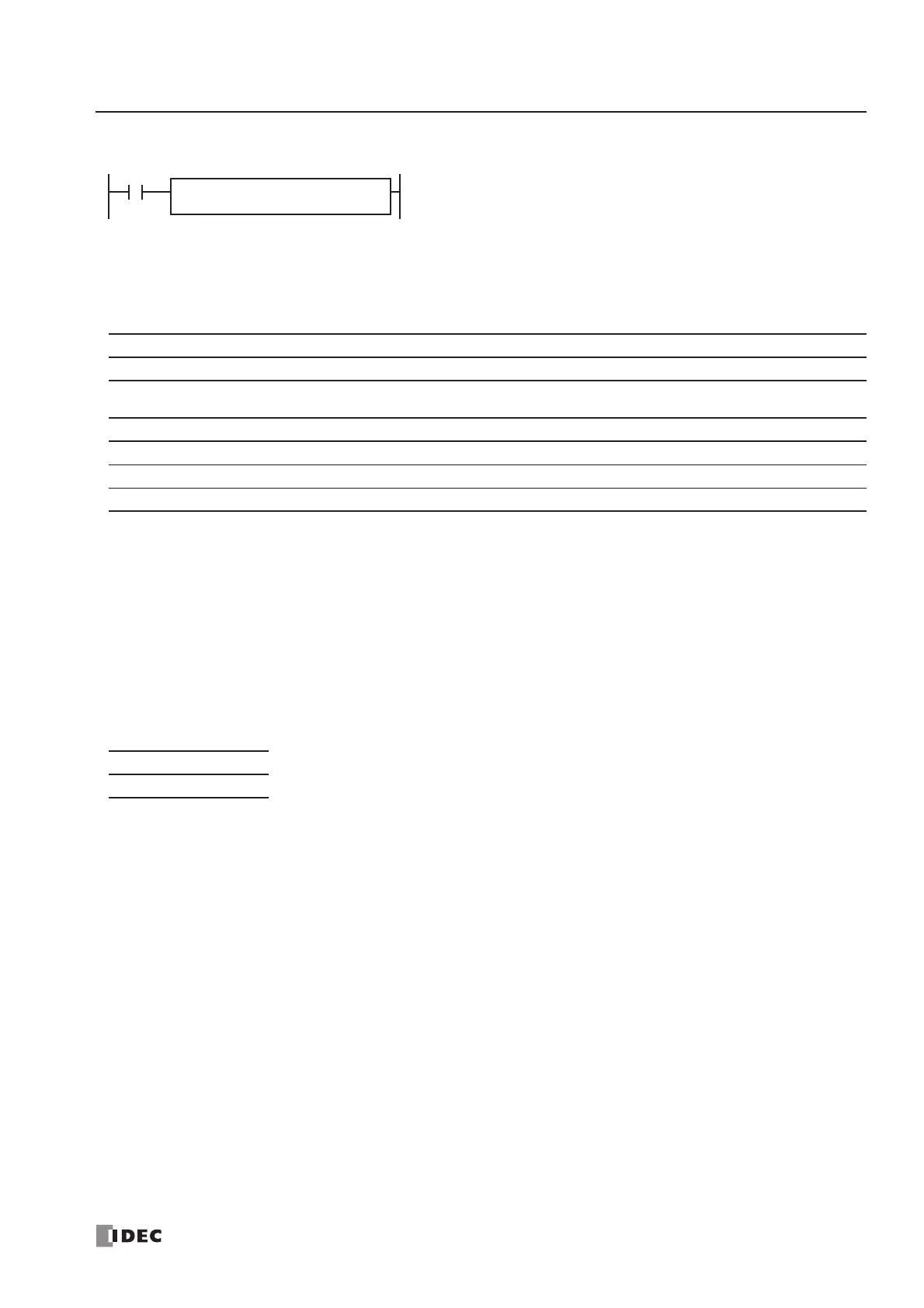14: DATA CONVERSION INSTRUCTIONS
« FC4A MICROSMART USER’S MANUAL » 14-5
ATOH (ASCII to Hex)
Applicable CPU Modules
Valid Operands
For the valid operand number range, see pages 6-1 and 6-2.
▲ Internal relays M0 through M1277 can be designated as D1. Special internal relays cannot be designated as D1.
When T (timer) or C (counter) is used as S2, the timer/counter current value is read out. When T (timer) or C (counter) is
used as D1, the data is written in as a preset value which can be 0 through 65535.
Valid values for source S1 data to convert are 30h to 39h and 41h to 46h. Make sure that the values for each source desig-
nated by S1 and the quantity of digits designated by S2 are within the valid range. If the S1 or S2 data is out of the valid
range, a user program execution error will result, turning on special internal relay M8004 and the ERR LED.
Since the ATOH instruction is executed in each scan while input is on, a pulse input from a SOTU or SOTD instruction
should be used as required.
Valid Data Types
FC4A-C10R2/C FC4A-C16R2/C FC4A-C24R2/C FC4A-D20K3/S3 FC4A-D20RK1/RS1 & FC4A-D40K3/S3
XXX X X
Operand Function I Q M R T C D Constant Repeat
S1 (Source 1) ASCII data to convert —————— X — —
S2 (Source 2) Quantity of digits to convert XXXXXXX 1-4 —
D1 (Destination 1) Destination to store conversion results — X ▲ XXXX — —
W (word) I (integer)
X—
S1, S1+1, S1+2, S1+3 → D1
When input is on, the ASCII data designated by S1 as many as the quan
tity of digits designated by S2 is converted into 16-bit binary data, and
stored to the destination designated by operand D1.
Valid values for source data to convert are 30h to 39h and 41h to 46h.
The quantity of digits to convert can be 1 through 4.
ATOH(W) S1
*****
S2
*****
D1
*****
When a bit operand such as I (input), Q (output), M (internal relay), or R (shift register) is
designated as the source or destination, 16 points are used.
When a word operand such as T (timer), C (counter), or D (data register) is designated as the
source or destination, 1 point is used.
